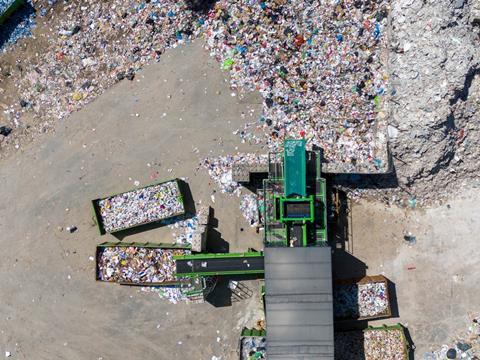
Mechanically recycled polymers are expected to grow, but are predicted to meet only 17-19% of Europe’s polyethylene and polypropylene demand by 2050, with similar limitations in other regions. Adoption is held back by economic pressures and the challenge of recycling certain plastics.
In this ICIS insight, Tom Brown, Chief News Correspondent at ICIS, explores how chemical recycling could bridge this gap. Despite current delays and policy hurdles, he argues that it could potentially add 3 million tonnes of capacity by 2029.
Mechanically recycled polymers’ share of the total market is set to increase in the coming decades, but penetration, defined as domestic recycling production versus total polymer demand, is likely to remain limited through to 2050.
Mechanical recycling domestic production is likely to represent 17% of total polyethylene consumption in Europe, and 19% of polypropylene by 2050, based on analysis of ICIS supply and demand data.
Rates in northern America and northeast Asia are likely to be similarly muted, according to ICIS analytics EMEA team lead for plastics recycling Egor Dementev.
Take-up of bottle-grade mechanically recycled polyethylene terephthalate is likely to be stronger, at 49% in northern America and Europe, but technological issues limit the odds of greater market dominance for other polymers.
“The penetration rates still stay quite limited, as lots of plastics applications such as polymer flexibles and textiles are intrinsically difficult to recycle mechanically,” he said, speaking at the EPCA annual conference in Berlin.
The projected 2050 rates are minor uptick compared to 2023 mechanically recycled polyethylene market penetration rates of 12% in North America and Europe and 4% in northeast Asia.
In Europe the 2023 rates represent a decline in comparison to 2022, Dementev added.
“2023 showed that macroeconomics still matter, and many companies especially those less exposed to consumer pressure switched to virgin material,” he said.
In future, chemical recycling could fill in some of the gaps left by mechanical recycling.
“Chemical recycling could be a complementary solution,” Dementev said. “Without chemical recycling, we are probably not going to leapfrog”
The chemical recycling and dissolution sector remains in a state of relative infancy, with around 130 plants operational or at the final investment decision stage of approval, compared to around 2,500 mechanical recycling plants.
The relatively small number of operational or approved plants, which are largely small-scale units, obscures the scale of potential capacity in the pre-approval phase at present, Dementev added.
Industry installed (plastic waste processing) capacity (pyrolysis-based technologies, chemical depolymerisation and dissolution) in Europe in 2024 stood at 150,000 tonnes/year, or 510,000 tonnes/year if including facilities in the construction and commissioning phase, but the current pre-FID project pipeline could add 3 million tonnes by 2029.
Several anticipated start-ups were delayed in 2023-24 due to a combination of factors, including permitting delays, access to feedstock, unfavourable macroeconomics and extended commissioning. As for FIDs postponements, they are largely policy driven, according to Dementev.
“The delays are for quite simple reasons, such as legal uncertainty, permitting, or mass balance calculations. There is an understanding of how to overcome those challenges,” he added.
If you liked this story, you might also enjoy:
The ultimate guide to the Packaging and Packaging Waste Regulation in 2024
How are the top brands progressing on packaging sustainability?
Sustainable Innovation Report 2024: Current trends and future priorities
Everything you need to know about global plastic sustainability regulation





















No comments yet